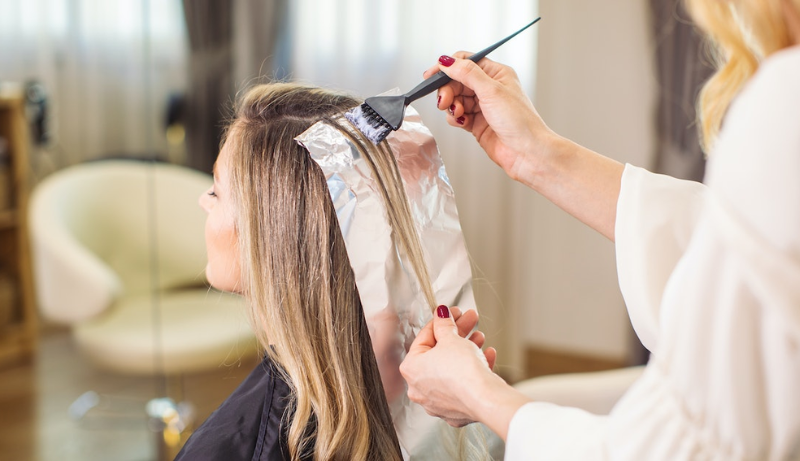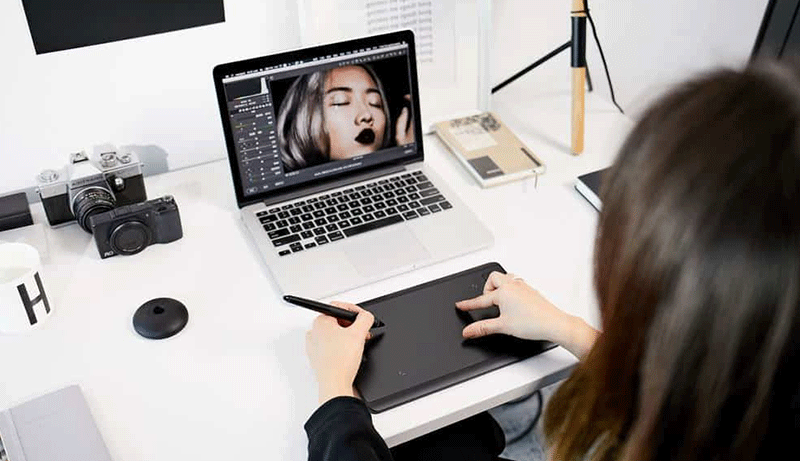More frequently than they might openly acknowledge, individuals engage in the practice of coloring and bleaching their hair. The process of bleaching or dyeing one’s hair involves multiple steps and generates a significant amount of waste, whether it occurs at home or in a professional salon. Disposing of hair bleach in an environmentally responsible manner can be quite challenging.
It is imperative for most individuals to understand the correct procedures for safely disposing of hair bleach, whether it is through disposal in the trash or down the bathroom sink. Proper waste disposal is of utmost importance, as any mishap in this regard could result in significant environmental harm. Below are some recommendations for the appropriate disposal of hair color and bleach.
Diverse Methods for the Disposal of Hair Bleach
Properly disposing of hair bleach is essential to prevent any adverse impact on the environment and human health. You can effectively and safely dispose of hair bleach by employing the following methods:
1. Dilution of Hair Bleach
To safely dispose of hair bleach, consider diluting it with water. Open the faucet and pour the bleach slowly down the kitchen sink or bathroom drain while allowing water to flow until the container is empty. After pouring all the bleach down the drain, let the water run for at least one minute before turning off the faucet.
Alternatively, you can choose to flush small amounts of bleach down the toilet, but exercise caution and only do this with minimal quantities. Make sure to flush the toilet two or three times to ensure thorough dilution. However, be mindful that even this method can have an impact on aquatic life, so it should only be used as a last resort if you cannot reuse or donate the bleach.
2. Donation
If you have unopened hair coloring products that you are certain you won’t use, consider donating them to a medical facility or an assisted living facility. These dye bottles can also find purpose at local long-term care facilities or women’s shelters where they may be used to color residents’ hair.
Not only will you save the trouble of disposal, but you’ll also experience the gratifying feeling of brightening someone else’s day. Ensure you inquire about local facilities willing to accept such donations, as many places, even sealed products, have specific guidelines for accepting such items.
3. Hazardous Waste Disposal Facility
Hazardous waste disposal facilities are equipped to handle and dispose of substances harmful to the environment and human health, including hair bleach. If you have questions about the types of products they accept or the disposal process, reach out to your local hazardous waste facility or contact the waste management division of your local government.
Depending on your location, you may be required to transport your hazardous waste to an authorized drop-off location, while some facilities may offer collection services.

To protect the environment and prevent accidents, it’s crucial to ensure the correct disposal of hazardous substances like hair bleach. If you need guidance on safely disposing of hair bleach or similar hazardous items, seek advice from your local hazardous waste center.
4. Utilize a Household Waste Program
Consider participating in a household waste program offered by your township or local government as a responsible way to dispose of excess or unwanted hair dye. Contact them to inquire if such initiatives are available in your area.
If they provide this service, you can drop off your surplus or unwanted hair bleach at the designated facility, ensuring that the dye gets used and doesn’t go to waste. If your community doesn’t offer such a program, you can locate a nearby hazardous waste disposal facility to properly dispose of the dye.
5. Opt for Natural Hair Dyes
To avoid dealing with harmful chemicals, opt for organic and plant-based hair bleach. Consider using henna, a natural hair dye that not only imparts color but also nourishes hair, adding shine and volume. If you have any leftover henna, you can safely dispose of it by adding it to your compost heap instead of throwing it in the trash. Remember to condition your hair well after using henna, as its color may fade quickly if you use oil or shampoo instead.
You can also enhance your henna dye with lemon or grapefruit juice. However, keep in mind that henna can be messy. Alternatively, you can simplify the process by purchasing one of the many plant-based hair colors available, which use fewer potentially harmful chemicals. These organic hues are gentler on both the environment and your hair.
What Is the Shelf Life of Hair Bleach?
Typically, hair bleach has a shelf life of two years. It’s crucial to check the expiration date before using it, as using expired bleach can pose risks. Outdated bleach may lead to hair damage and improper results. Exposure to light can cause bleach to degrade rapidly, losing its potency within approximately 20 minutes.
The shelf life of hair bleach products that include developers, bleach powder, or other chemicals may vary significantly. Different manufacturers make different claims about the longevity of their products, making it challenging to determine an exact shelf life.
Once opened, the shelf life of hair bleach is limited, and it can expire within six months under certain conditions. The expiration date may also vary depending on whether the product contains bleach solution or other commonly used chemicals, so it’s essential to carefully inspect the product label.
Even if an unopened hair dye container appears in good condition to the untrained eye and nose, there are signs that it may have gone bad. These signs include an unusual color or odor, a leaking or damaged bottle, the formation of a cake-like substance around the bottle’s top, or damaged, faded, or dented packaging.
What to Do With Unused Hair Bleach?
If you frequently change your hair color and have leftover hair bleach, especially if you bleach your hair at home, there are several practical options for using the remaining product:
- Use it as a Disinfectant: Hair bleach can be employed as a potent disinfectant for cleaning various surfaces around your home.
- Clear Drain Clogs: Surprisingly, hair bleach can help clear drain clogs. Pour it directly into the drain, let it sit for 15 minutes, and then flush it with hot water.
- Create Your Disinfectant Wipes: If you have old rags lying around, cut them into small squares and soak them in a bleach solution to make DIY disinfectant wipes.
- Remove Stains: For stubborn stains, apply a small amount of bleach directly to the stain, and watch it disappear as you clean it away.
- Clean the Toilet: To thoroughly clean a dirty toilet bowl, add half a cup of bleach, let it sit for 30 minutes, and then flush for a spotlessly clean result.
These alternative uses for leftover hair bleach can help you make the most of the product and reduce waste while ensuring safe and effective applications in various household tasks.
Can Hair Bleach Be Disposed of Down the Drain?
Hair bleach can be safely disposed of down the drain if it is diluted with a significant amount of water and kept separate from other chemicals. However, it is not advisable to pour hair bleach into the toilet, as it can harm septic systems and have adverse effects on aquatic life by disrupting beneficial microorganisms essential for waste degradation.
If you have concerns about the environmental impact of disposing of excess bleach, it is recommended to contact a local hazardous waste disposal company for guidance on proper disposal methods. Never flush hair dye down the toilet, as these products typically contain synthetic chemicals and other components classified as hazardous waste.

The various synthetic chemicals used in hair dye production have the potential to harm the ecosystem. For example, phenylenediamine (PPD), a common hair dye ingredient, can have fatal effects on fish and other aquatic creatures. Additionally, it can severely contaminate soil and water.
Hair dyes washed down the drain can pose a significant risk to the water supply, making it challenging for wastewater treatment facilities to remove these pollutants effectively. This contamination can render water supplies unsafe and unusable.
Is Hair Bleach Considered Toxic or Hazardous Waste?
While hair bleach is not inherently toxic, it contains substances classified as hazardous. Therefore, it must be disposed of in a specific manner to protect both the environment and human health. Hydrogen peroxide and ammonia, the key components of hair bleach, are recognized as hazardous waste materials.
Improper disposal of these substances in regular trash can lead to significant environmental harm, as they have the potential to leach into the soil and contaminate water supplies. It is crucial to handle and dispose of hair bleach in a manner that is safe and environmentally responsible.
FAQ
1. How should I dispose of hair bleach safely?
You can safely dispose of hair bleach by diluting it with a substantial amount of water and pouring it down the drain. However, avoid pouring it into the toilet as it can harm septic systems and aquatic life.
2. Can I throw unused hair bleach in the trash?
Unused hair bleach should not be thrown in the regular trash. It contains potentially hazardous chemicals, so proper disposal is crucial.
3. What should I do if I have concerns about environmental impact when disposing of hair bleach?
If you’re concerned about the environmental impact of disposing of hair bleach, contact a local hazardous waste disposal facility for guidance on safe and eco-friendly disposal methods.
4. Is it safe to pour hair bleach down the toilet?
No, pouring hair bleach down the toilet is not safe. It can harm septic systems and negatively affect aquatic life.
5. Are there any specific guidelines for disposing of hair bleach with other chemicals in it?
The disposal of hair bleach with additional chemicals may require specific guidelines. Check the product label or contact a hazardous waste disposal facility for advice.
6. Can hair bleach contaminate my water supply if washed down the drain?
Hair bleach washed down the drain can potentially contaminate your water supply, making it difficult for wastewater treatment facilities to remove these pollutants effectively.
7. What makes hair bleach hazardous waste?
Hair bleach contains components like hydrogen peroxide and ammonia, which are classified as hazardous waste due to their potential environmental and health risks.
8. Is hair bleach considered toxic to the environment?
While not inherently toxic, hair bleach can have adverse effects on the environment if not disposed of properly due to its chemical components.
9. Can I use hair bleach for other household tasks?
Unused hair bleach can be repurposed for tasks such as cleaning surfaces, clearing drain clogs, creating disinfectant wipes, and removing stains.
10. What precautions should I take when using hair bleach to avoid harm?
To prevent harm to yourself and the environment, follow the instructions provided in the bleach kit carefully, and avoid leaving bleach in your hair for an extended period.
Final Word
In conclusion, using hair bleach carries environmental and health responsibilities. Bleach is a potent and corrosive substance, and it is essential to take the appropriate precautions when using and disposing of it.
Improper handling of peroxide-based hair bleach can result in toxicity and harm to both hair and scalp. To achieve the desired hair color while minimizing risks, it is crucial to carefully follow the instructions provided in the bleach kit, as leaving bleach in the hair for an extended period can lead to damage.





Leave a Reply